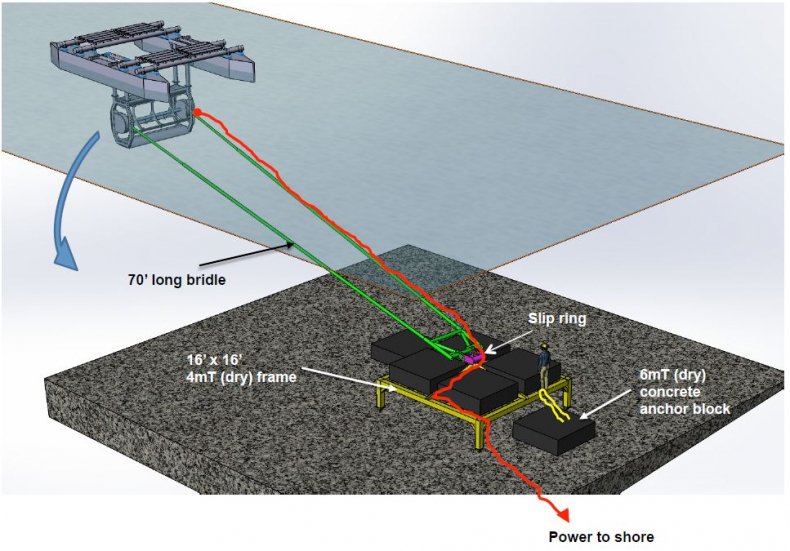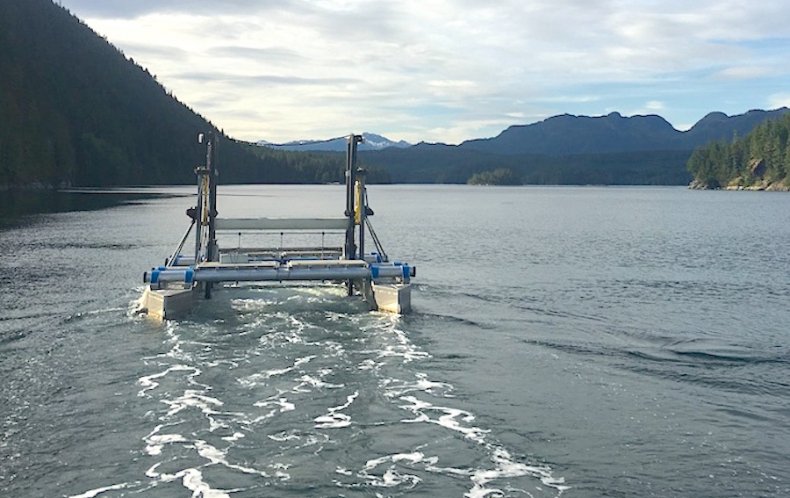Many remote West Coast communities rely on diesel for electricity generation, which has a number of negative economic and environmental effects.
But some sites along British Columbia’s extensive coastline are ideal for tidal power microgrids that may well be the answer for off-grid communities to generate clean energy, experts suggested in a COAST (Center for Ocean Applied Sustainable Technologies) virtual event Wednesday.
There are 40 isolated coastal communities, many indigenous communities and 32 of them are mainly dependent on diesel for electricity generation, said Ben Whitby, program manager at PRIMED, a marine renewable energy research laboratory at the University of Victoria (UVic).
In addition to being an expensive and unreliable source of energy, there are environmental and community health considerations associated with shipping diesel to remote communities and running generators, Whitby said.
“It is not a purely economic question,” he said.
“You have the emissions associated with diesel generation. There are also the risks of transporting diesel … and sometimes in many remote communities on Vancouver Island, when diesel deliveries don’t arrive, they end up without power for three or four days in a row. ”
What people are reading

The Heiltsuk First Nation, which suffered a 110,000-liter diesel spill in its territorial waters in 2016, is an unfortunate case study on the potential environmental, social and cultural risks faced by remote coastal communities due to the transport of fossil fuels across the world. along the rugged coastline.
An American barge carrying fuel for coastal communities in Alaska ran aground at Gale Pass, littering a sacred and primary food collection area in Heiltsuk.
There are several potential tidal energy sites near off-grid communities across the continent, on both sides of Vancouver Island and in the Haida Gwaii region, Whitby said.
Tidal energy harnesses the natural ebb and flow of coastal tidal water and is a highly predictable source of renewable energy, he said.
Microgrids are self-sufficient energy systems that are based on renewable energy from ocean, wind, solar, small hydroelectric and geothermal sources.
Lisa Kalynchuk, UVic’s vice president for research and innovation, said she was excited about the possibilities associated with tidal energy, not just in British Columbia, but all along the coasts of Canada. #Renewables
The community, rather than a utility company like BC Hydro, is responsible for demand management, storage and generation with power systems running independently or in conjunction with backup fuel generators, which offers operators a measure of energy sovereignty.
Depending on proximity, cost and renewable solutions, tidal power is not necessarily the solution for all communities, Whitby noted, adding that compared to hydro, tidal power is even more expensive.
However, the best candidates for tidal power are small, off-grid communities that rely heavily on expensive fossil fuels, Whitby said.
“That’s really why the focus on British Columbia is on a smaller scale,” he said.
“The time it would take (these communities) to recover any capital investment is much shorter.
“And the cost is actually on par because they are already paying a significant amount of money for that diesel generated power.”
Lisa Kalynchuk, UVic’s vice president for research and innovation, said she was excited about the possibilities associated with tidal energy, not just in British Columbia, but all along the coasts of Canada.
“Canada has approximately 40,000 megawatts available on our three coasts, “said Kalynchuk.
“Of course, not all of this power can be realized, but it does exist, so it brings us to the difficult part: harnessing this available energy and delivering it to remote communities that need it.”
Challenges in establishing tidal power include the additional cost and complexity of building in remote communities, intermittent energy storage for later use, the economic model, the costs associated with tidal power installations, and financing for small communities, said.
But smaller tidal power projects can potentially establish a history of more nascent marine renewables, at lower cost and without facing the same social or regulatory resistance that a large-scale project might face.

A successful tidal energy demonstration project was set up using a MAVI tidal turbine on the Blind Channel to power a private resort on West Thurlow Island, part of the Discovery Islands outer chain wedged between Vancouver Island and the mainland, Whitby said.
The channel’s strong tidal currents, which typically reach six knots and are close to the marina, proved to be a good site to test the small-scale turbine and associated microgrid system that could be replicated to power remote communities, he said.
The mooring system, cable and turbine were installed fairly quickly and were operational during the summer of 2017. The system is no longer active as provincial and federal funding for the project came to an end.
“But as a proof of concept, we think it was very successful,” said Whitby, adding that microgrid tidal power is still in the early stages of development.
Ideally, the project will be reactivated with new funding, so that it can continue to act as a test site for renewable marine energy and to show the system to remote coastal communities who might want to consider tidal energy, he said.
In addition to harnessing a local renewable energy source and increasing energy independence, tidal power microgrids can boost jobs and new business opportunities, Whitby said.
The Blind Channel project was installed using the local supply chain in the vicinity of Campbell River, he said.
“Most of the vessels and support come from that area, so it was all really locally sourced.”

Funding from higher levels of government will likely be necessary to establish a permanent tidal power demonstration site or to help a community conduct case studies and fund a project, Whitby said.
Both of them federal and provincial governments have established sources of funding for remote communities to stop relying on diesel.
But remote community federally funded projects or provincially to date they have focused on more established renewable energies, such as hydroelectric, solar, biomass or wind energy.
The goal of BC’s Remote Community Power Strategy, part of the CleanBC plan, is to reduce the use of diesel for electricity by 80 percent by 2030 by targeting 22 of the largest diesel locations in the province, many of the which are found along the coast.
The province has announced a series of major investments to move indigenous coastal communities away from diesel-generated electricity, but predominantly involving solar or hydro Projects.
A situation that is not likely to change, as the 2020 funding application guide deemed tidal projects ineligible for cash.
However, the potential for establishing tidal power microgrids in British Columbia is good, Kalynchuk said, noting that UVic is a highly experienced research center and several local companies are employing and developing related service technologies to install and maintain the systems. .
“It also addresses our growing need to find alternative sources of energy in the face of the current climate crisis,” he said.
“The way forward is complex and layered, but an essential component in the fight against climate change is a shift from fossil fuels to other sources of energy that are renewable and environmentally friendly.”
Rochelle Baker / Local Journalism Initiative / Canada National Observer
Reference-www.nationalobserver.com